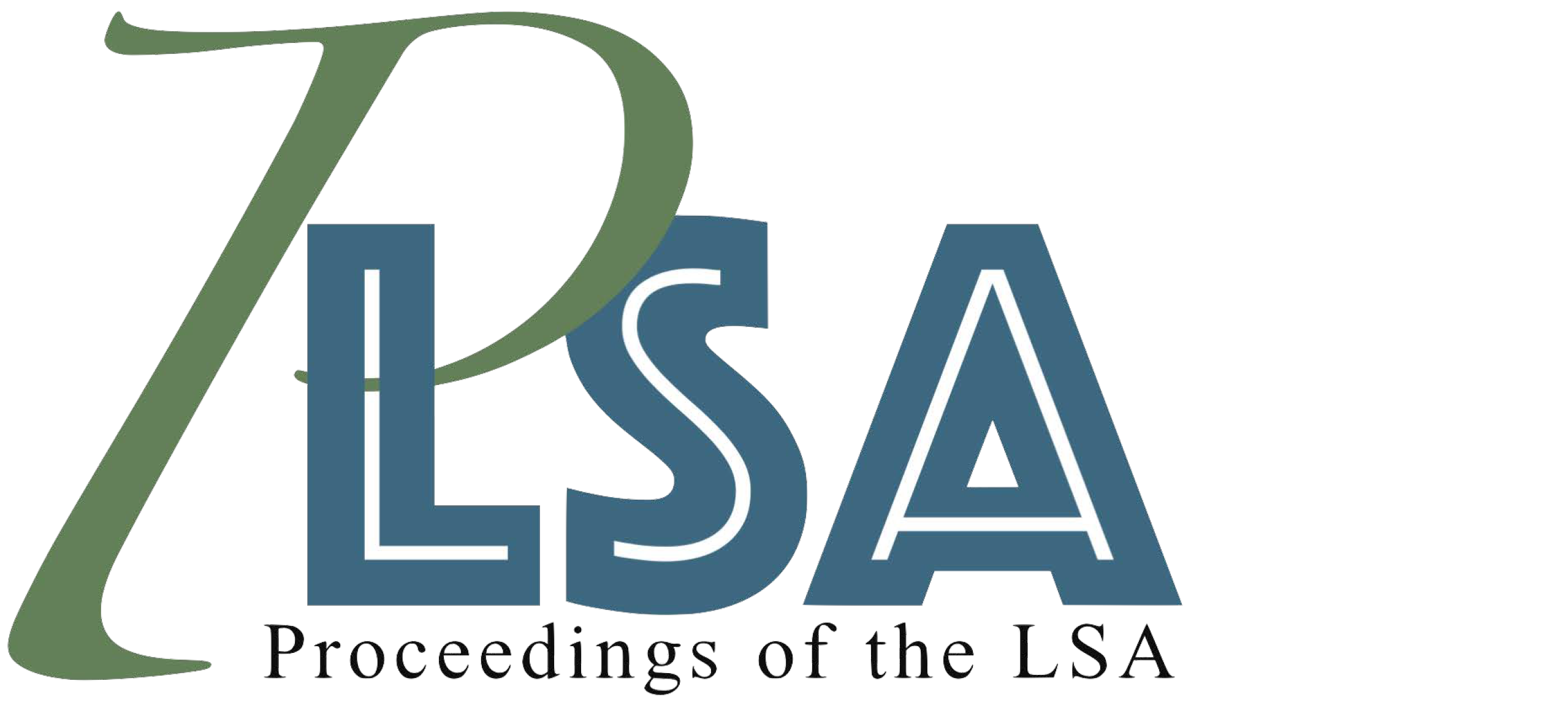Tonal alternations in attributive constructions in Mwaghavul
DOI:
https://doi.org/10.3765/plsa.v10i1.5943Keywords:
Chadic languages, phonetics, tonomorphemeAbstract
Mwaghavul is an underdocumented Chadic language spoken in Plateau
State, Nigeria, by approximately 150,000 people (Blench 2011). Mwaghavul has tonal lowering in associative constructions, where the first nominal in the construction surfaces with low tone, regardless of its tone in isolation (Arokoyo & Fwangwar 2019). However, tonal lowering is not fully predictable, as some high tone nominals surface as mid tone in associative constructions, instead of low. Number of syllables, vowel length and quality are not consistent predictors, as there are minimal pairs for high tone alternations. We investigate the phonetics of these high tones, to determine whether two phonetically distinct high tones have been incorrectly documented as one, or whether one phonetic high tone has two phonological behaviours. The f0 of 77 tokens in isolation and 561 tokens in associative constructions was extracted at 10 points using Prosody Pro (Xu 2013). In isolation, high tones that become mid in associative are visually distinct from those that become L, with approximately 15-20Hz difference throughout the tone duration. Linear mixed effects models confirm this difference is statistically significant. The presence of separate high and superhigh tones in Mwaghavul indicates that the phonetic implementation of the floating low tone is realized differently depending on the pitch of the original tone. This suggests that the original tone is not deleted, but rather dissociated and present, affecting the realization of the tonomorpheme in an unusual pattern that is not commonly attested.
Downloads
Published
Issue
Section
License
Copyright (c) 2025 Laura Griffin, Samuel Akinbo, Avery Ozburn, Tongpan Fwangwar

This work is licensed under a Creative Commons Attribution 4.0 International License.
Published by the LSA with permission of the author(s) under a CC BY 4.0 license.
